La Niña
Cyclones, floods, endless rain. Aspects of a vast La Niña puzzle stretching right across the Pacific. La Niña, 'the little girl'. Her name belies her immensity, her awesome power. This year she affects the lives of 450 million people on four continents
Who is La Niña ?
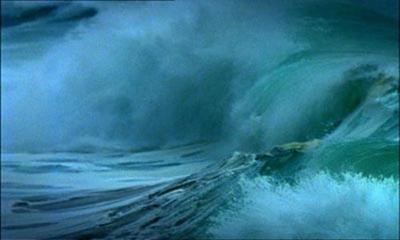
From Sydney to Santiago, from Wellington to Tokyo, humans feel her effects. La Niña, the "little girl". In 1998 / 99 she has affected the lives of more than 450 million people, on four continents. But who is she?
La Niña is a climate phenomenon, the sister event of El Niño. Where El Niño left drought, La Niña causes floods, massive cyclones, endless rain. La Niña is in character the total opposite to her brother - the other half of the Southern Oscillation puzzle.
Sea levels rise, in some places like Papua New Guinea, by nearly as much as half a metre. In severe La Niña's low-lying islands almost disappear beneath the waves.
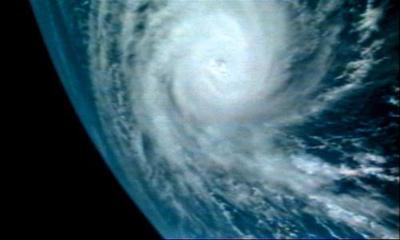
Scientists are still not exactly sure what triggers the La Niña phenomenon, but every three to seven years or so the barometric pressure differential between the eastern and western sides of the Pacific becomes more marked - high pressure over the Americas, low-pressure over Australia and Asia. A huge system known as the Walker Circulation intensifies, pushing the westerly flowing trade-winds with greater force and regularity towards Australia. In conjunction with a deep ocean wave known as the Rossby Wave - more and more warm surface water piles up against the landmasses in the western Pacific - Australia, PNG, Indonesia, the Philippines, Korea, China, Japan.
The hugely swollen warm-pool generates much greater convection than usual, resulting in a massive increase in rainfall in the western Pacific. The Yangtze Basin floods, an increased frequency of cyclones (typhoons) hit the coast of Japan, Korea & Australia.
Meanwhile, on the other side of the Pacific - on the west coast of South America in Peru and Chile, the rain seems to almost disappear, the sea level drops. The temperature of the ocean also drops while huge up-welling of cold water under the Humbolt Current results in explosions of marine life. Life in the Galapagos blossoms.
On the mainland however there is a distinct lack of water, even drought. The rain moves eastwards, away from the west coast towards Brazil and Argentina. During a La Niña phase, Rio de Janeiro often experiences large floods.
How big is La Niña ?
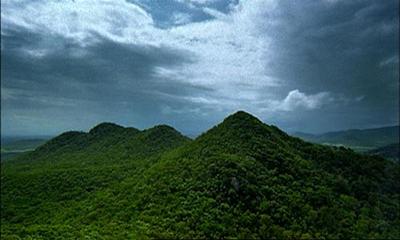
The La Niña climate phenomenon is vast and complex. Indeed, scientists are still investigating just how great is her influence. La Niña is known to be to be responsible for droughts and wild-fires in California, but also phenomenon beyond the Pacific.
Atlantic hurricanes off the US south-east can be La Niña generated. Hurricane Dennis which hit the US late August 1999 was one of La Niña's offspring. In the Indian ocean La Niña causes floods in Bangladesh and other parts of the subcontinent. She even reaches as far as South Africa, causing droughts. Further research is needed to establish exactly how great is La Niña's influence.
La Niña in Australia
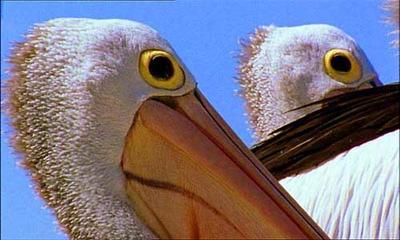
using the rivers as highways to penetrate deep into the dry interior.
La Niña's influence in Australia is most pronounced in the north-east - the tropical rainforests of the coast, the Great Barrier Reef and the deserts of Queensland.
In many ways La Niña is the force that binds these areas together, unites them. And the relationship is based primarily on water.
La Niña in the Tropical Rainforest
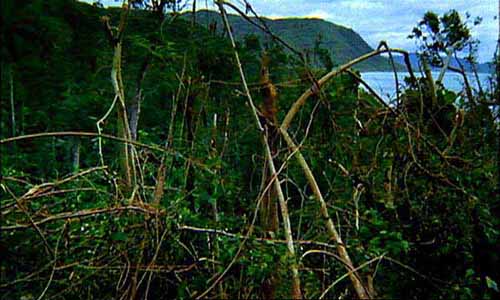
It was one of the fastest forming and fastest moving cyclones on record.
The film reveals unique footage travelling inside a cyclone as it crosses the Great Barrier Reef and crashes up against the Daintree rainforest - tearing it to shreds. Cyclone Rona, one of La Niña's many cyclones, was one of the fastest forming and fastest moving cyclones on record.
Moving at 30 kms/hr with gusts of up to almost 200 kms/hr - Rona is an awesome spectacle. In her wake tracts of forest totally denuded of leaves, hills of giant toothpicks. And amongst it - the survivors struggling to survive in their world turned upside down.
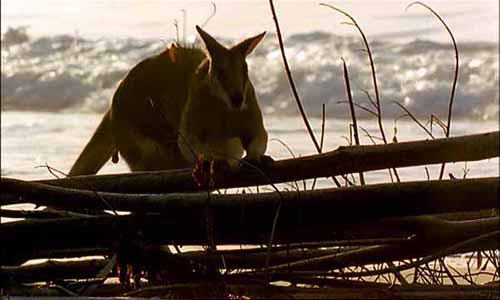
In the 24 hours following Cyclone Rona, more rain falls than normally falls in a month. It begins to course across the forest floor. Tree kangaroos and other forest dwellers must either swim, head for the trees, or die. Fitzroy River Tortoises cleverly escape the endless torrent by staying deep below - breathing through their rear-ends or "cloacas".
A few days following the cyclone vast areas turn a strange autumn colour, countless tiny twigs supplying water to the leaves having been broken or bruised by the killer winds. For leaf eaters such as Lumholtz tree kangaroos, starvation is a constant threat in the aftermath of the cyclone.
The cyclone is only the beginning of many months of seemingly endless rain. Plagued by hordes of water-born insects - tree roos and quolls struggle to keep their hungry joeys alive in the cold, dark world of La Niña.
La Niña and the Great Barrier Reef
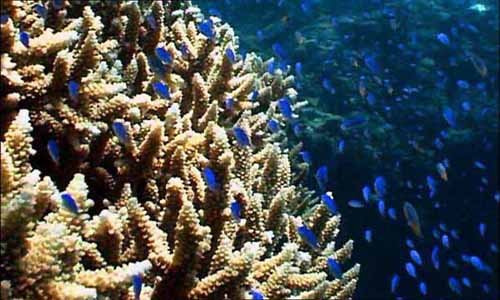
variations of just a couple of degrees in temperature will kill coral.
In the aftermath of a cyclone, vast quantities of water flood out of rivers back into the ocean. Areas that survived being turned into rubble by the enormous waves Cyclone Rona dumped on the reef face a new threat. The threat isn't so much the mud and soil in the flood-plumes, but rather the temperature and the salinity - or rather lack of it.
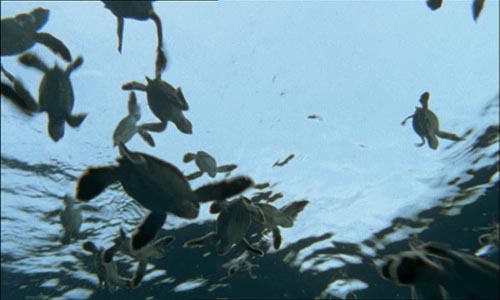
Rona dumped a new threat on the Great Barrier Reef.
Tropical reefs survive within a very narrow comfort zone and variations of just a couple of degrees in temperature will kill coral. Similarly, fresh water is fatal for marine creatures. Vast areas of reef are evacuated - creatures flee in their millions including the very fabric of the reef itself the coral polyps or zooxanthellae. Coral polyps consist of a partnership between an animal part and a plant part.
La Niña and the Deserts
Land parched for years soon floods. Ancient rivers dormant for years return. In a La Nina year the Great Artesian Basin, the largest inland drainage system in the world springs back to life with awesome force.
Some rivers such as the curiously named Cooper's Creek journey almost 1500 kms, transporting vast quantities of water into the dry interior, filling vast inland lake systems that have been parched for years. And with the water comes life.
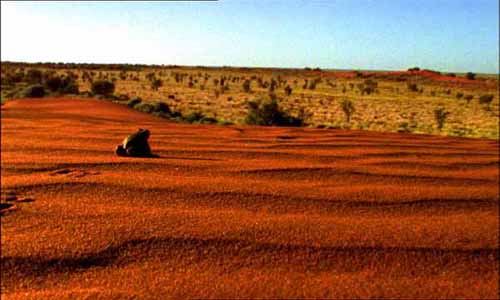
Waterbirds in their hundreds of thousands follow the water into the desert, using the rivers as highways to penetrate deep into the dry interior. Some even bring the fish with them, transporting fish eggs into the desert lakes on their own feet. Within days of arriving at journey's end, sometimes within only hours, the desert is full of breeding birds trying to raise their chicks before the water disappears.
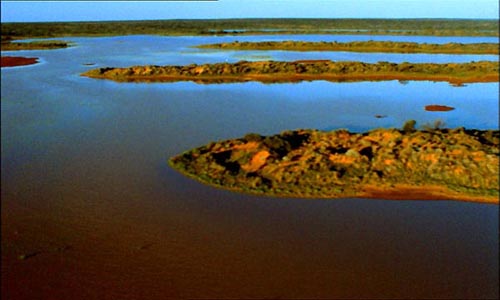
Ancient rivers dormant for years return.
The mystical inland sea appears.
La Niña and the Red Roo
Of all the animals reliant on La Niña to breed, the one that best exemplifies the relationship is the red kangaroo. The red kangaroo is a master of Australia's dry heart, nomadic, able to survive on little food and water. But the characteristic best adapts them for their arid lifestyle is their amazing reproductive system - a system acutely attuned to La Niña.

acutely attuned to La Niña.
During the lean years, reproduction shuts down. Indeed the 40 degrees heat of the desert can cook the males' testes, which become temporarily sterile. But when La Niña, her rains, her greenery arrives - red roo females are ready. The females can actually carry a foetus of 300 cells, known as a "delayed blastocyst", in suspended animation for many months. As La Niña's rains begin to turn the desert green a hormonal reaction sends the blastocyst into overdrive. The female gives birth 33 days later and soon pouches bulge with joeys.
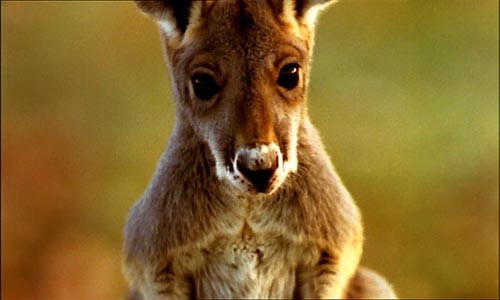
In the meantime, the female has mated again with the males whose testes do recover in the cool, wet conditions of La Niña. A second blastocyst forms in her womb, waiting to go. When the first joey leaves the pouch, she gives birth to the second joey, then mates again, creating a third foetus waiting in her womb.
Within months of the first rains, every female effectively has three joeys on the go all at the same time - one at foot, another in the pouch, and another in suspended animation. During La Nina years, red roo populations explode.
In the Wake of La Niña
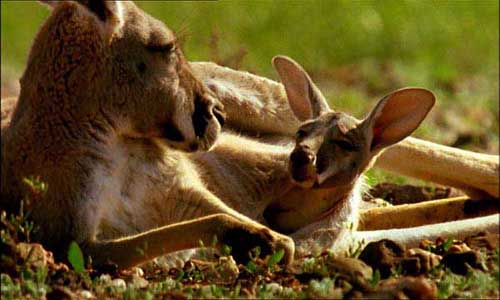
that best exemplifies the relationship is the red kangaroo.
La Niña has a benign side to her personality. She is more than just cyclones, floods and destruction. The benefits of La Niña in the deserts are clear. In the tropical rainforests and on the Great Barrier Reef, La Niña's work of renewal is more subtle - yet no less remarkable.
Months after a cyclone's visit - areas of forest still lie flattened. Yet these areas, known as "cyclone-gaps" are actually extremely vibrant, dynamic areas of renewal. Mature, established rainforest are actually very hierarchical communities, with light reaching only the first few metres of canopy, and the forest floor a dark place indeed - a difficult place for young seedlings to begin life.

When "cyclone-gaps" are created however, career opportunities for young saplings abound. There is light and space aplenty. Soil nutrients stored in the ground for years have been released as the giants toppled. Fast growing pioneer species quickly colonise the gaps providing shade for the more sun-sensitive seedlings - some of which have remained stunted for 30 years, waiting for their chance to grow.
Cyclone gaps are in turn very popular with rainforest herbivores that arrive to feed on the bountiful, succulent new growth. In the greater scheme of things, cyclones are a very important factor in maintaining rainforests - their long-term health and bio-diversity. The same is also true of the Great Barrier Reef.
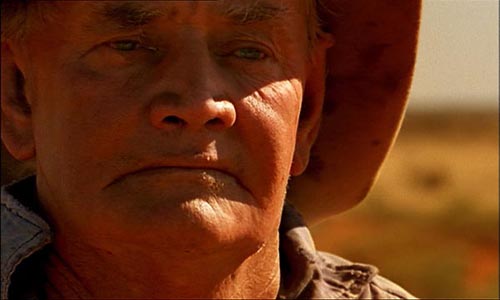
Six months after the cyclone's and flood-plumes visits - the bleached areas return to life. Much like the rainforest the reef can be a very, crowded, "static" habitat and is reliant on "disturbance events" to create space for new life. New coral grows as a result of larvae settling from the surrounding corals. After a "disturbance event" areas are resettled by coral larvae drifting in on currents from as far as 100's of kms away. In the long term, La Niña's disturbance events may have a beneficial effect on the long-term genetic health and bio-diversity of the Great Barrier Reef.
La Niña and the Future
Sando Kidd is a grazier living on the edge of Australia's dry heart. He is acutely aware of the importance of the weather, and the climate patterns that drive it.
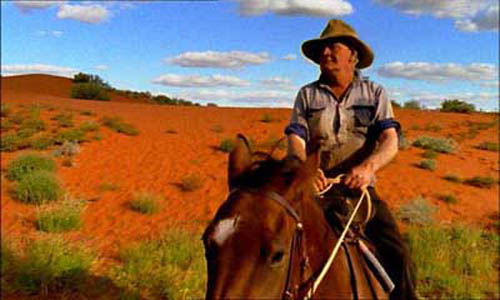
Sando is sceptical of some aspects of meteorology. He does not believe we can predict the weather. Yet he recognises the importance of the intermittent "wet years" that bring water to his land. That these years only arrive every 3 to 7 years or so. He listens keenly for news of cyclones on the coast. Welcomes them.
Sando believes that in many ways the European attitude to land management is in appropriate in Australia where the annual calender would be better described in 4000 day rather than 365 day cycles.
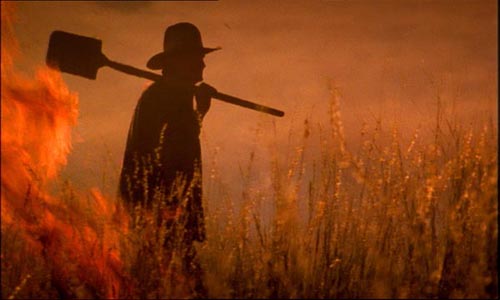
Science is only just beginning to unravel the mystery of La Niña, only just beginning to be able to predict her arrival - and to use this information to the benefit of agriculture and disaster management.
At the same time, there have been some worrying signs that our understanding of cycles such as La Niña should progress quickly. The balance of cycles such as La Niña and El Niño may be beginning to change, just as we are beginning to understand them.
There is no longer any disputing that the earth's climate is changing. Green house emissions, ozone depletion, deforestation, overpopulation are complicating factors adding to a puzzle already extremely complicated.
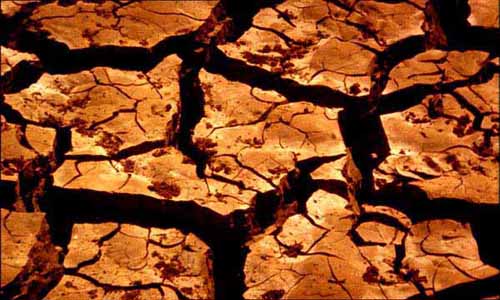
In the last few decades there has been an increase in the number of El Niño's and a decrease in the number of La Niña's - flip-sides of the same coin which were previously observed to be in balance. It begs the question. Is this simply part of a longer natural cycle, or are the cycles being altered by the arrival of new factors? Only time will tell.
